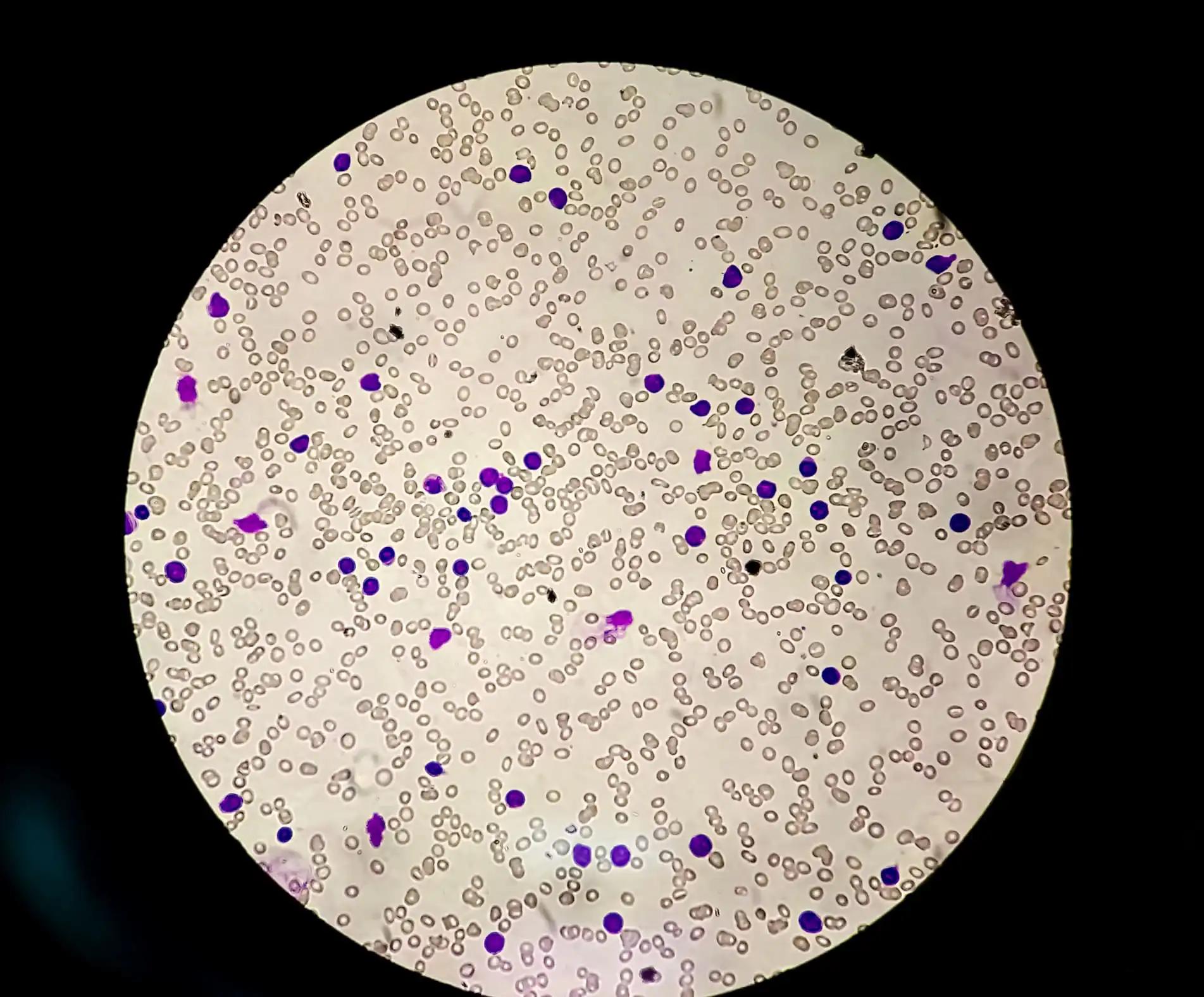KEY TAKEAWAYS
- A phase II trial evaluated Ibrutinib (IBR) and Venetoclax (VEN) as first-line treatments for patients with high-risk CLL.
- 120 patients were enrolled, with a median follow-up of 4 years and a 4-year progression-free survival rate of 94.5%.
- Baseline characteristics and TP53 mutations were not associated with a response at 6 or 12 months.
- 77 patients achieved U-MRD remission at 24 cycles of combined therapy, whereas 11 experienced recurrences of blood MRD.
Aphase II trial of Ibrutinib (IBR) and Venetoclax (VEN) combination therapy as a first-line treatment for high-risk patients with chronic lymphocytic leukaemia (CLL) was conducted. This report includes data from 120 patients (80 in the original cohort and 40 in an expansion cohort), with a median follow-up of 4 years. The treatment regimen consisted of three cycles of IBR 420mg daily, followed by the addition of VEN, with weekly dose escalation to 400mg daily. The combined therapy was administered in 24 cycles, with 28 days per cycle. Patients with undetectable minimal residual disease (MRD) in the bone marrow (BM) at 24 cycles (as determined by flow cytometry, with a sensitivity of 10-4) discontinued both VEN and IBR; those with MRD+ continued IBR alone.
An amendment to the trial later allowed for an additional 12 cycles of combined VEN and IBR for patients who remained BM MRD+ after Cycle 24. Response assessments included BM and CT studies using the 2008 IWCLL criteria. U-MRD was defined as <0.01%; low MRD+ as 0.01% to <1%; and high MRD+ as ≥1%.However, none of those mentioned above characteristics, including TP53 mutation, were associated with marrow U-MRD responses at 12 months or with the best MRD response at any time during the combined therapy. There was a trend towards a lower U-MRD rate among patients with mutated IGHV versus unmutated IGHV at 12 months (p=0.09) and as the best response (p=0.09).
The 4-year PFS is 94.5% (95% CI, 90.3%-98.9%), and the 4-year overall survival (OS) is 96.6% (95% CI, 93.3%-99.9%). The 4-year PFS according to TP53 aberrant status is shown in Figure 1. The 4-year PFS for patients with del(17p)/TP53 mutation (n=27) is 90.9% and for patients without del(17p)/TP53 mutation (n=93) is 95.5%. Among these 77 patients, 11 had a recurrence of blood MRD (defined as MRD ≥0.01% on two consecutive visits) after a median time of 23.9 months post Cycle 24.
Of the 11 patients with MRD recurrence, ten are being monitored without any active therapy for CLL and without clinical disease progression; 1 patient had disease progression after 22 months of treatment-free intervals and is currently receiving acalabrutinib. The remaining 23 patients (all low MRD+ in BM, range 0.01-0.95%) who were BM MRD+ at the end of cycle 24 of the combination continued IBR monotherapy. With the trial amendment, 18 of these 23 patients resumed VEN. Of these 18 patients, 11 (61%) achieved U-MRD remission during the third year of combined therapy.
In cases with habitual lymphocytic leukaemia( CLL) treated with chemoimmunotherapy( CIT), the presence of ≥ 3( complex karyotype, CKT) and specifically ≥ 5( high- CKT, hCKT) chromosomal rarities( CA) is associated with a poor prognostic. Examinations into the prognostic impact of CKT with targeted agents are miscellaneous and disagreeing, with reports of danger and no effect on progression-free( PFS) and overall survival(zilch). Of the 895 cases, 672 were in the pooled ven population and 223 in the CIT arm. No CKT( nCKT) was linked in79.4,81.0,83.5, and87.9 of cases treated with CIT, RVe, GVe, and GIVe independently, while intermediate CKT( iCKT) and hCKT were set up in13.5,14.7,11.5,9.4 and7.2,4.3,5.0 and2.7, independently.
Manly gender, del( 11q), del( 6q) and trisomy 12 were linked to CKT. At month 15, undetectable MRD( uMRD) rates were lower in cases with CKT compared to nCKT in the CIT arm(37.0 vs57.1; OR0.44, p = 0.016). Translocations( TL) were associated with inferior PFS, anyhow of the treatment arm. Cases with CKT but without TL had similar PFS to
nCKT( HR0.53, p = 0.217), while those with CKT and TL had significantly shorter PFS (HR2.79, p<0.001). In a multivariate analysis, CKT was linked as an independent prognostic factor for PFS with CIT.
Source:https://ash.confex.com/ash/2022/webprogram/Paper170850.html
Clinical Trail:https://clinicaltrials.gov/ct2/show/NCT02756897
Nitin Jain, MD1, Michael J. Keating, MBBS2, Philip A. Thompson, MBBS1, Alessandra Ferrajoli2, Jayastu Senapati, MD, MBBS, DM1*, Jan A. Burger, MD, PhD1, Gautam Borthakur, MD1, Koichi Takahashi, MD, PhD2, Zeev E. Estrov, MD1, Marina Konopleva, MD, PhD1, Koji Sasaki, MD1, Tapan M. Kadia, MD3, Naveen Pemmaraju, MD1, Naval Daver, MD1, Elias Jabbour, MD1, Courtney D. DiNardo, MD, MSCE1, Yesid Alvarado, MD1, Musa Yilmaz, MD1, Prithviraj Bose, MD4, Maro Ohanian, DO1*, Rashmi Kanagal-Shamanna, MD5, Keyur Patel, MD, PhD5*, Jeffrey L. Jorgensen, MD, PhD5*, Sa A Wang, MD5*, Sameh Nassar, MD6*, Naveen Garg, MD6*, Hyunsoo Hwang7*, Xuemei Wang, MS7*, Nichole Cruz, RN1*, Ana Ayala, RN2*, William Plunkett, PhD8, Hagop Kantarjian, MD9, Varsha Gandhi, PhD8 and William G. Wierda, MD, PhD1



